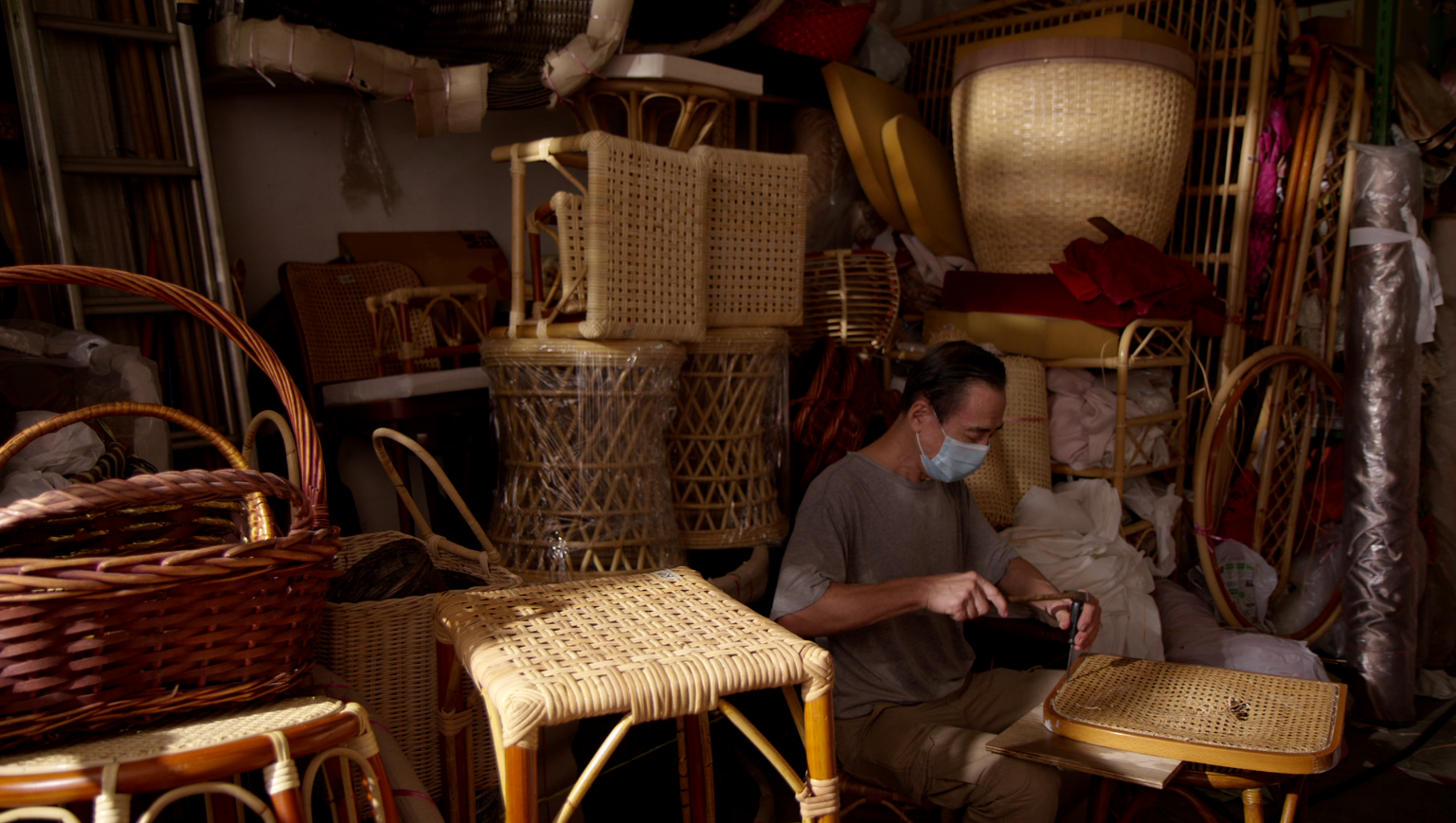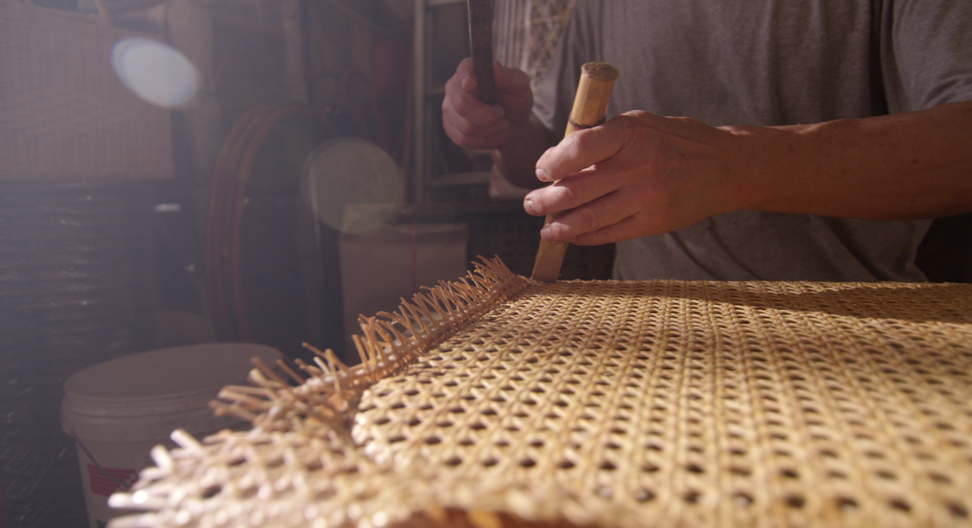

- Chen Foon Kee, 72, who has run family business in city state for more than 50 years, painstakingly creates shelves, tables and chairs by hand
- Covid-19 has led to renewed interest in his light and durable intricate designs made from thin stems of palms that grow across Southeast Asia
In the 1970s, rattan furniture could be found in almost every Singaporean household. The pieces were also popular throughout Europe, where they were prized for their lightness and durability.
For more than 50 years, Chen Foon Kee has been handweaving raw rattan – the thin stems of a type of palm that grows throughout Southeast Asia – to make shelves, chairs and tables.
Today, Chen, 72, is one of Singapore’s last few rattan craftsmen. His small furniture store cuts a distinct profile, located amid the hustle and bustle of busy central Singapore.

He took over the store, Chun Mee Lee Rattan Furniture, from his father, a Hakka Chinese immigrant who started the business in 1948 after moving from southern China.
Studying the crafts involved takes time and dedication. In the Hakka tradition, rattan makers are required to start as apprentices and learn the skills from a master craftsman for two to three years before starting their own businesses.
It’s all still done by hand
“Rattan furniture is made by hand, so every piece is unique,” Chen says. “Most of my customers learn about my business through word of mouth. They appreciate my craftsmanship, and that’s how I see my work, as something beyond just making a living.”
He started learning how to make rattan furniture when he was still a student.
“After school, I would watch my father work and copy his actions,” Chen says. “I gained enough experience to master the basics.”
To make a perfect piece of rattan furniture, a craftsman has to peel off the skin of each rattan strand before carefully cutting it into sections based on the size of the product.

“Rattan is very durable and airy,” he says. “It’s very suitable for making furniture.”
With the help of tools such as hammers and chisels, rattan can be woven into different sizes and shapes depending on the needs of customers. It’s a process that involves great precision. Chen says the seats all have to be made to a specific height and width, regardless of the style of the furniture.
The process is also intimate and requires a great deal of focus. “We go through a thought process when making a chair or any other product with our hands,” he says. “We think about how a customer feels about the product. The process of making it is a way of communicating with the customer.”
The rise and fall of rattan furniture
Chen took over the family business in 1969, when he was only 19, after the sudden death of his father.
At the time, rattan furniture was fashionable in Singapore and could be found in almost every household. “It was a booming industry from the 1970s to ’80s,” he says. “Back then, our customers would buy an entire rattan furniture set – a shelf, a chair and a small coffee table.”
His company also shipped many pieces to European countries, such as Germany and France, where there was big demand for rattan products.

Yet from the ’90s onwards, demand fell as people preferred heavier furniture over rattan designs. So Chen changed his business focus to repairing and refurbishing old furniture.
Nowadays, many customers see their old rattan furniture as a keepsake, he says.
“After all, this piece of furniture could have been with them for more than 20 years and holds memories,” he says. “Some rattan furniture pieces are like family heirlooms, passed down from generation to generation.”
How Covid-19 revived interest in rattan
In April, Singapore imposed stay-at-home orders to combat the spread of the coronavirus disease, Covid-19.
Since the measures were lifted in June, Chen says he has received a large number of new orders because customers have started to realise the benefits of rattan chairs.

“Since we reopened in June, business has been brisk,” he says. “Many customers came to buy a new rattan chair after they found their chairs at home were not comfortable enough during the two-month lockdown.”
Despite the renewed interest in rattan furniture, Chen admits his craft is now almost non-existent in Singapore because of the slow, labour-intensive production process.
However, he believes this traditional craft should be preserved because it’s more than simply a way to make money.
“This type of craftsmanship is a very important part of our culture,” he says. “If we lose it, people will not be able to visit a workshop and create what they want. It would be a pity to lose something made with so much heart.”
Emmeline Ong contributed to this report, adapted from an article first published in Goldthread.

